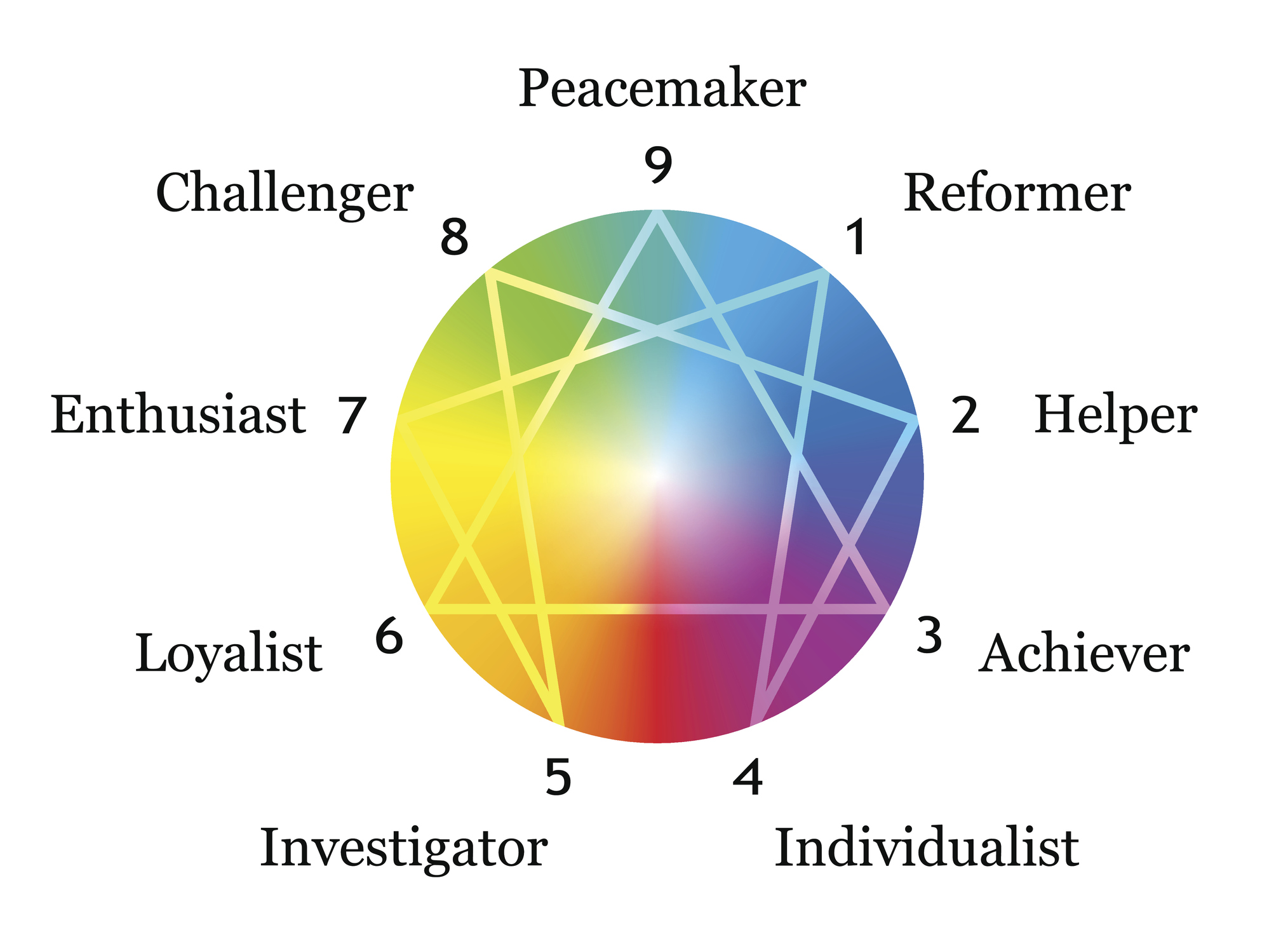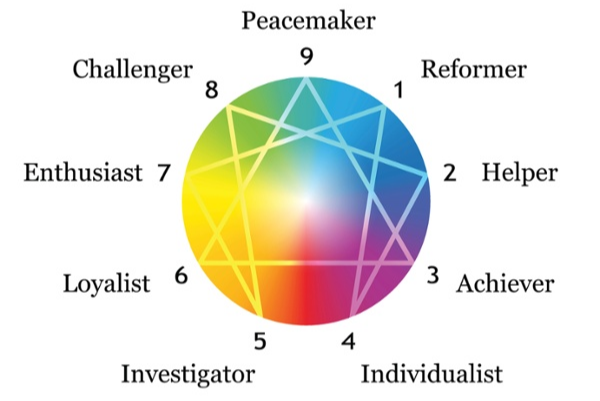If you are a regular reader, you have come to understand the value that we place on analysis— especially analysis of the marketing activities we manage, the shopper preferences we gather and the trends we see taking shape around us. It’s at the core of what we do, and frankly, with all the constructive feedback 15 years of marketing partnerships have brought us, “a little less analysis, please” has never been one of them. Analysis is natural for most of us on the DMA team, so it should come as no surprise that deep analysis of ourselves and our team dynamics has been a part of the journey in building a company that is committed to growing and improving with each passing year, so that we are the best marketing partners we can be.
How We Use the Enneagram
So what has that looked like for us? Over the years, we’ve found value in the information and insights that we’ve found in multiple different tests, such as Strengthfinders (which helps you identify your natural talents in order to better leverage your best assets for individual and team growth) as well as the DiSC® assessment (which categorizes four ways that humans behave and interact when giving and receiving information). Simply put, Strengthsfinders uncovers WHAT tools you bring to the team, and the DiSC® uncovers HOW you tend to use or express those tools.
What we have found is that all gathered information is important, yet the WHY behind certain perspectives and tendencies is oftentimes a roadblock that can be difficult to overcome with a satisfactory outcome for all concerned parties. In the fall of 2017, we stumbled upon the Enneagram, an ancient personality theory that been a beacon of understanding on all the “WHY’S,” and it has quite literally been transformative for us as individuals, as a team, and as marketers in so many ways.
The Enneagram test divides humanity into 9 basic “types” that are characterized by our core strengths/weaknesses, unconscious needs, primary fears, and default tendencies. These are the WHY’S behind how we think, act and feel.
The beauty that we have found in the Enneagram is that it puts into words what might seem ordinary and intuitive to one person, but is completely foreign to the people around them with whom they are charged to find camaraderie, cooperation and consensus day-in and day-out. It is most definitely a tool for fostering empathy and respect within a team environment as well as providing an unbiased vocabulary for coaching and fostering team growth.

Here is a quick description of the 9 personality types as explained by the Enneagram Institute:
- Type One, known as The Reformer, is principled, purposeful, self-controlled, and perfectionistic.
- Type Two, known as The Helper, is generous, demonstrative, people-pleasing, and possessive.
- Type Three, known as The Achiever, is adaptable, excelling, driven, and image-conscious.
- Type Four, known as The Individualist, is expressive, dramatic, self-absorbed, and temperamental.
- Type Five, known as The Investigator, is perceptive, innovative, secretive, and isolated.
- Type Six, known as The Loyalist, is engaging, responsible, anxious, and suspicious.
- Type Seven, known as The Enthusiast, is spontaneous, versatile, acquisitive, and scattered.
- Type Eight, known as The Challenger, is self-confident, decisive, willful, and confrontational.
- Type Nine, known as The Peacemaker, is receptive, reassuring, complacent, and resigned.
Within each number, there are layers of complexities that explain how some Enneagram types share similarities in the way they process information and emotions. You can also learn how types are nuanced by their wings (the number on either side of them) and why two people with the same type might have some glaring differences. The Enneagram also has a very structured way of explaining behavior in emotional health, both positive and negative. I say all of that to not confuse the topic, but to dissuade you from devaluing a personality typing system that can somehow fit all of humanity into nine tidy categories. The Enneagram truly is a comprehensive tool that is easy to comprehend and utilize, yet makes room for deeper study and additional layers of application—but boxing people in based on one type is not conducive to a more cohesive team, so we recommend using this as a tool rather than as a be-all, end-all.
It is also worth mentioning that for most work environments, the Enneagram is most applicable within teams, departments, and leadership groups where daily results are influenced by the quality of the relational dynamics. As a manager, the Enneagram can deliver the insights you have been missing from your coaching toolbox. We have certainly found that to be true!
Here are a few of our favorite Enneagram resources:
 Enneagram Books We Recommend:
Enneagram Books We Recommend:
- The Road Back to You: An Enneagram Journey to Self-Discovery by Ian Morgan Cron and Suzanne Stabile
- The Path Between Us: An Enneagram Journey to Healthy Relationships by Suzanne Stabile
- The Sacred Enneagram: Finding Your Unique Path to Spiritual Growth by Christopher Heuertz
- The 9 Types of Leadership: Mastering the Art of People in the 21st Century Workplace by Beatrice Chestnut
 Enneagram Instagram Accounts We Recommend:
Enneagram Instagram Accounts We Recommend:
 Enneagram Podcasts We Recommend:
Enneagram Podcasts We Recommend:
- The Road Back to You
- The Enneagram Journey
- Typology
Curious to learn more about how we’re using this tool in our personal and professional lives, or have your own favorite Enneagram resource you highly recommend? Leave us a comment below or reach out to us on Twitter @TheCoreBlog!
{{cta(‘5de978d7-8c0c-4f83-8388-4d52595702af’)}}












